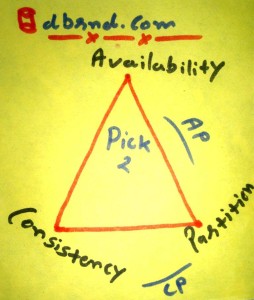This article is half-done without your Comment! *** Please share your thoughts via Comment ***
We all are aware about the ACID Properties of Database System (Atomicity, Consistency, Isolation, Durability).
If you don’t know about the ACID, please visit below article.
ACID Properties in Database System (Atomicity, Consistency, Isolation, Durability)
In last one decade, lots of new Database Products available in the Market. The types are: RDBMS Products, NoSQL Products, BIGDATA, MPP Products.
My Question is, how do you choose best database product for your project?
Traditional Answer, The first preference of Database Designer would be ACID Properties oriented Databases.
But most of the NoSQL Databases are not providing full support of ACID Properties, then also NoSQL Databases are popular and People are using it for different purposes.
Because most of the NoSQL Databases are not ACID oriented, but they are CAP oriented.
What is CAP theorem (Consistency, Availability, Partition)?
CAP Published by Eric Brewer in 2000, the theorem is a set of basic requirements that describe any distributed system like: NoSQL Cassandra, MongoDB, CouchDB.
Consistency:
All nodes can see the same data at the same time. The data are the same across the cluster, so you can read or write any node.
Each transaction start and end in consistent stats so that all nodes can access the same data. Actually, It is achieved by update all nodes before reading.
Availability:
Here, The meaning of Availability is to access cluster in any situation like: server goes down, server delay. The system should always respond to a request, even if data is not in sync or inconsistent state, It prints the message like “This cluster data are not updated”.
Partition:
Here, the meaning of Partition is to avoid any type of system failure and system should run with available nodes or data. It does not allow any single point of failure because data replicated across all the clusters.
The Partition can work with Consistency (CP) or can work with Availability (AP) means, you can never find any Database System which follows the full CAP theorem.
Storage System with Partition and Consistency (CP):
Redis, MongoDB, AppFabric Caching, and MemcacheDB.
Storage System with Partition and Availability (AP):
Cassandra, DynamoDB, and CouchDB.




Leave a Reply